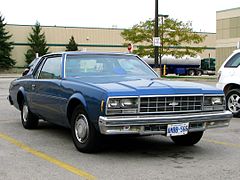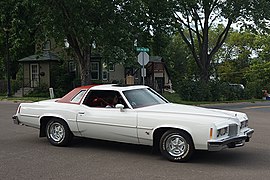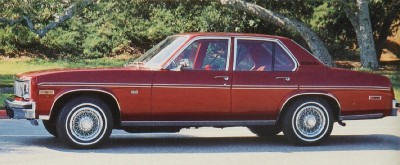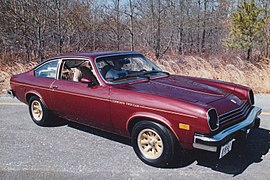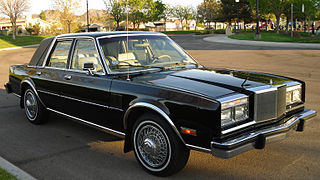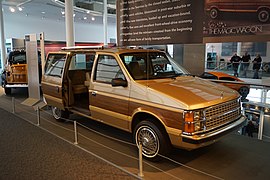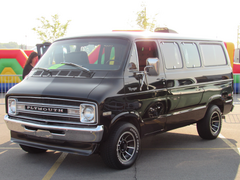
Mercury was a brand of mid-priced automobiles produced by American manufacturer Ford Motor Company between 1938 and 2011 with 1939 being the first model year. It stood as its own line within Ford until 1945, and thereafter formed half of Ford's Lincoln-Mercury Division. Created by Edsel Ford in 1938 to bridge the gap between the Ford and Lincoln model lines, its principal competition was General Motors' Buick and Oldsmobile divisions, and Chrysler Corporation's DeSoto and Chrysler brands.

Personal luxury car is a North American car classification describing somewhat sporty, sophisticated mass-market coupés that emphasized comfort over performance. The North American manufacturers most often combined engineering, design, and marketing to develop upscale, distinctive "platform sharing" models that became highly profitable.
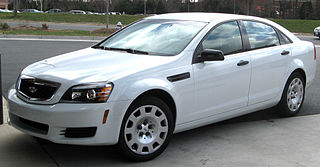
The Chevrolet Caprice is a full-size car produced by Chevrolet in North America for the 1965 to 1996 model years. Full-size Chevrolet sales peaked in 1965 with over a million sold. It was the most popular car in the U.S. in the 1960s and early 1970s, which, during its lifetime, included the Biscayne, Bel Air, and Impala.

The Pontiac Catalina is a full-size, junior series automobile produced by Pontiac from 1950 to 1981. Initially, the name was a trim line on hardtop body styles, first appearing in the 1950 Chieftain Eight and DeLuxe Eight lines. In 1959, it became a separate model as the "entry-level" full-size Pontiac.

In the automotive industry, rebadging is a form of market segmentation used by automobile manufacturers around the world. To allow for product differentiation without designing or engineering a new model or brand, a manufacturer creates a distinct automobile by applying a new "badge" or trademark to an existing product line.

The Ford LTD is a range of automobiles manufactured by Ford for the 1965 to 1986 model years. Introduced as the highest trim level of the full-size Ford model range, the LTD moved the Ford range upmarket, offering options and features previously reserved for Mercury and Lincoln vehicles. For much of its production life, the LTD competed against the Chevrolet Caprice ; the Mercury Marquis served as its divisional counterpart from 1967 until 1986.
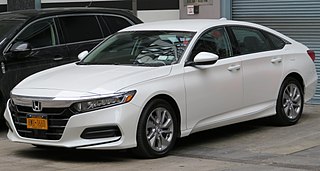
Mid-size—also known as intermediate—is a vehicle size class which originated in the United States and is used for cars larger than compact cars and smaller than full-size cars. "Large family car" is a UK term and a part of the D-segment in the European car classification. Mid-size cars are manufactured in a variety of body styles, including sedans, coupes, station wagons, hatchbacks, and convertibles. Compact executive cars can also fall under the mid-size category.

Full-size car—also known as large car—is a vehicle size class which originated in the United States and is used for cars larger than mid-size cars. It is the largest size class for cars. In Europe, it is known as E-segment or F-segment.

The Chevrolet Lumina APV is a minivan that was produced by the Chevrolet division of General Motors. The first front-wheel drive minivan sold by Chevrolet, the Lumina APV was sold in a single generation from the 1990 to 1996 model years. Marketed alongside the Pontiac Trans Sport and Oldsmobile Silhouette, the Lumina APV competed against the Dodge Grand Caravan/Plymouth Grand Voyager, the extended-length Ford Aerostar, and the Mazda MPV.

The B platform is a full-size, rear-wheel drive, body-on-frame car platform, that was produced by General Motors (GM) from 1926 to 1996. Originally made for Oldsmobile and Buick, all of General Motors's five main passenger car makes would use it at some point. It was closely related to the original rear-wheel drive C and D platforms, and was used for convertibles, hardtops, coupes, sedans, and station wagons. With approximately 12,960,000 units built, divided across four marques, the 1965–1970 B platform is the fourth best selling automobile platform in history after the Volkswagen Beetle, Ford Model T, and the Fiat 124.
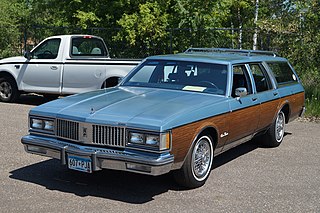
The Oldsmobile Custom Cruiser is an automobile that was manufactured and marketed by Oldsmobile from 1971 until 1992. Marking the return of Oldsmobile to the full-size station wagon segment, the Custom Cruiser was initially slotted above the intermediate Oldsmobile Vista Cruiser, ultimately above the later mid-size Oldsmobile Cutlass Cruiser.

The Pontiac Parisienne is a full-size rear-wheel drive vehicle that was sold by Pontiac on the GM B platform in Canada from 1958 to 1986 and in the United States from 1983 to 1986. Right-hand drive models were locally assembled in Australia, New Zealand, and South Africa until 1969. For most of its run, the Canadian Parisienne was nearly mechanically identical to the American Chevrolet Impala or Chevrolet Caprice. The Parisienne wagon continued under the Safari nameplate until 1989. Parisienne or La Parisienne means a grammatically female person or thing from Paris, France.

The Ford LTD II is an automobile produced and marketed by Ford Motor Company between 1977 and 1979 in the United States and Canada. Deriving its name from the full-sized Ford LTD model line, the intermediate LTD II consolidated the Ford Torino and Gran Torino model lines, with the Ford Elite replaced by the Ford Thunderbird. Offered in a two-door sedan, four-door sedan, and station wagon, the LTD II also served as a basis for the final generation of the Ford Ranchero coupe utility.

The Dodge St. Regis is an automobile that was marketed by Dodge from the 1979 to 1981 model years. Replacing the Monaco, the St. Regis was the largest Dodge sedan, positioned above the mid-size Diplomat and Aspen. In contrast to both the Monaco and the Diplomat, the St. Regis was offered solely as a four-door sedan. Produced for a single generation, the St. Regis is one of the shortest-lived Dodge nameplates.
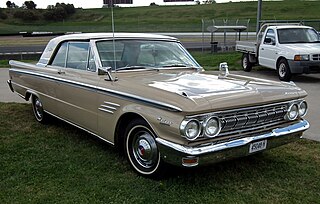
The Mercury Meteor is an automobile that was produced by Mercury from the 1961 to 1963 model years. Adopting its nameplate from the namesake Ford of Canada brand, the Meteor was introduced as the base-trim full-size Mercury sedan, while the compact Mercury Comet shared a naming convention associated with the ongoing Space Race of the early 1960s. Slotted below the Mercury Monterey, the Meteor was the Mercury counterpart of the Ford Fairlane.

The General Motors H platform is an automobile platform used by subcompact cars from the 1971 to 1980 model years. The first subcompact car design developed by GM, the rear-wheel drive H platform initially underpinned the Chevrolet Vega and its Pontiac Astre counterpart. For 1975, the H platform was expanded from entry-level vehicles to sport compacts, adding the Chevrolet Monza, Buick Skyhawk, Oldsmobile Starfire, and Pontiac Sunbird.
The GM A platform was a rear wheel drive automobile platform designation used by General Motors from 1925 until 1959, and again from 1964 to 1981. In 1982, GM introduced a new front wheel drive A platform, and existing intermediate rear wheel drive products were redesignated as G-bodies.

The Pontiac Grand Safari was Pontiac's top-of-the-line full-size station wagon offered from 1971 to 1978. The Grand Safari used the grille and interior trim of the Bonneville and Grand Ville passenger car series, and most examples were trimmed with woodgrain paneling on the sides and tailgate.
This is a list of automobiles produced for the general public in the North American market. They are listed in chronological order from when each model began its model year. If a model did not have continuous production, it is listed again on the model year production resumed. Concept cars and submodels are not listed unless they are themselves notable.

The General Motors X platform is a rear-wheel drive compact car automobile platform produced from the 1962 to 1979 model years. Developed by Chevrolet, the architecture was initially unique in the U.S. to the Chevy II, first joined by the Pontiac Ventura in 1971, then a range of other GM products as its divisions expanded their compact model lines.




